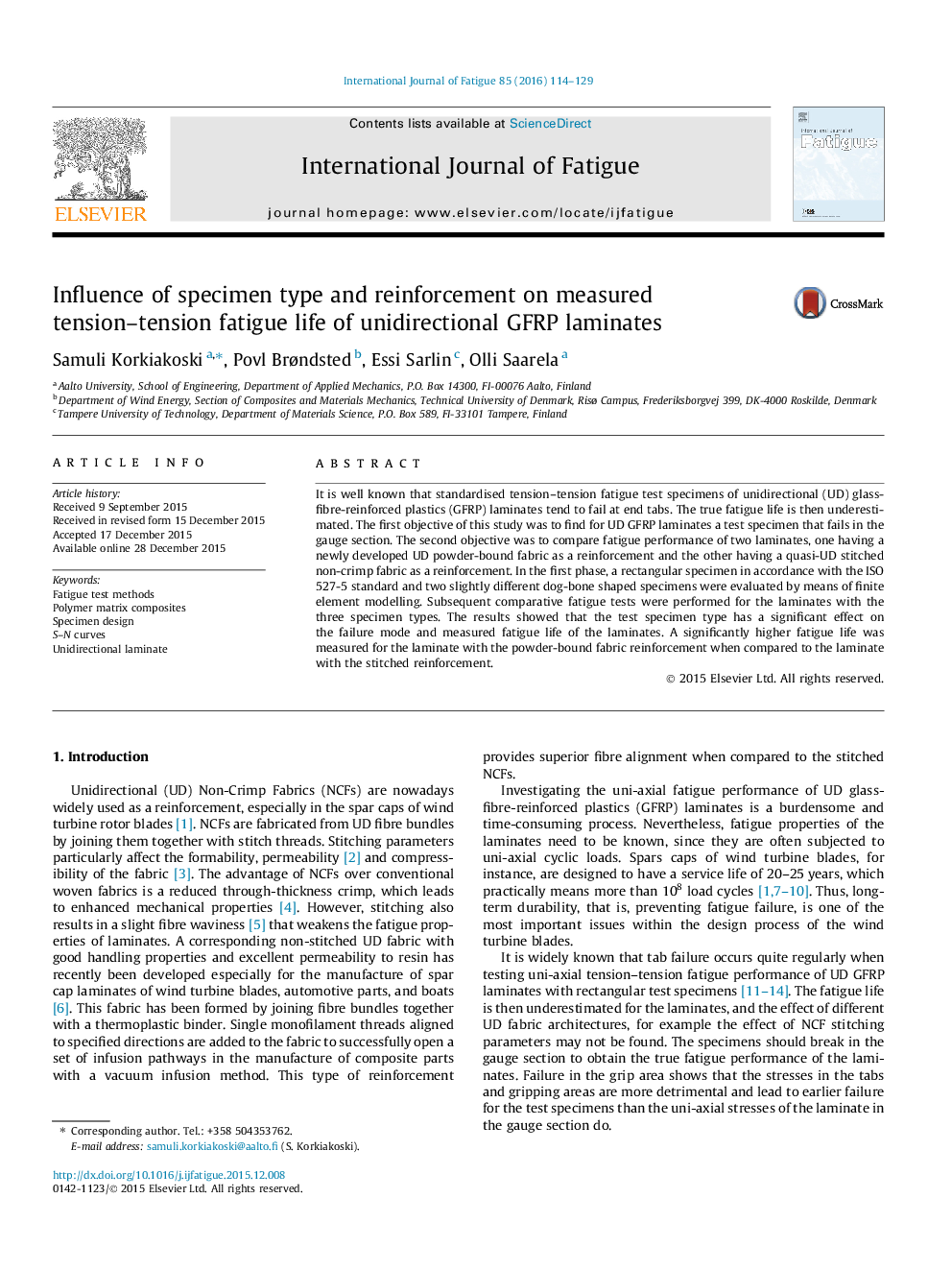| Article ID | Journal | Published Year | Pages | File Type |
|---|---|---|---|---|
| 778165 | International Journal of Fatigue | 2016 | 16 Pages |
•Tensile fatigue tests were performed for UD and quasi-UD GFRP laminates with three specimen types.•Damage initiation and accumulation were monitored in the gauge sections.•Rectangular specimens perform poorly in tensile fatigue testing.•An optimal dog-bone specimen minimizes tab failures and maximizes the measured fatigue life.•Over ten-fold fatigue life was measured for the UD laminate compared to the quasi-UD laminate.
It is well known that standardised tension–tension fatigue test specimens of unidirectional (UD) glass-fibre-reinforced plastics (GFRP) laminates tend to fail at end tabs. The true fatigue life is then underestimated. The first objective of this study was to find for UD GFRP laminates a test specimen that fails in the gauge section. The second objective was to compare fatigue performance of two laminates, one having a newly developed UD powder-bound fabric as a reinforcement and the other having a quasi-UD stitched non-crimp fabric as a reinforcement. In the first phase, a rectangular specimen in accordance with the ISO 527-5 standard and two slightly different dog-bone shaped specimens were evaluated by means of finite element modelling. Subsequent comparative fatigue tests were performed for the laminates with the three specimen types. The results showed that the test specimen type has a significant effect on the failure mode and measured fatigue life of the laminates. A significantly higher fatigue life was measured for the laminate with the powder-bound fabric reinforcement when compared to the laminate with the stitched reinforcement.
Graphical abstractFigure optionsDownload full-size imageDownload as PowerPoint slide
